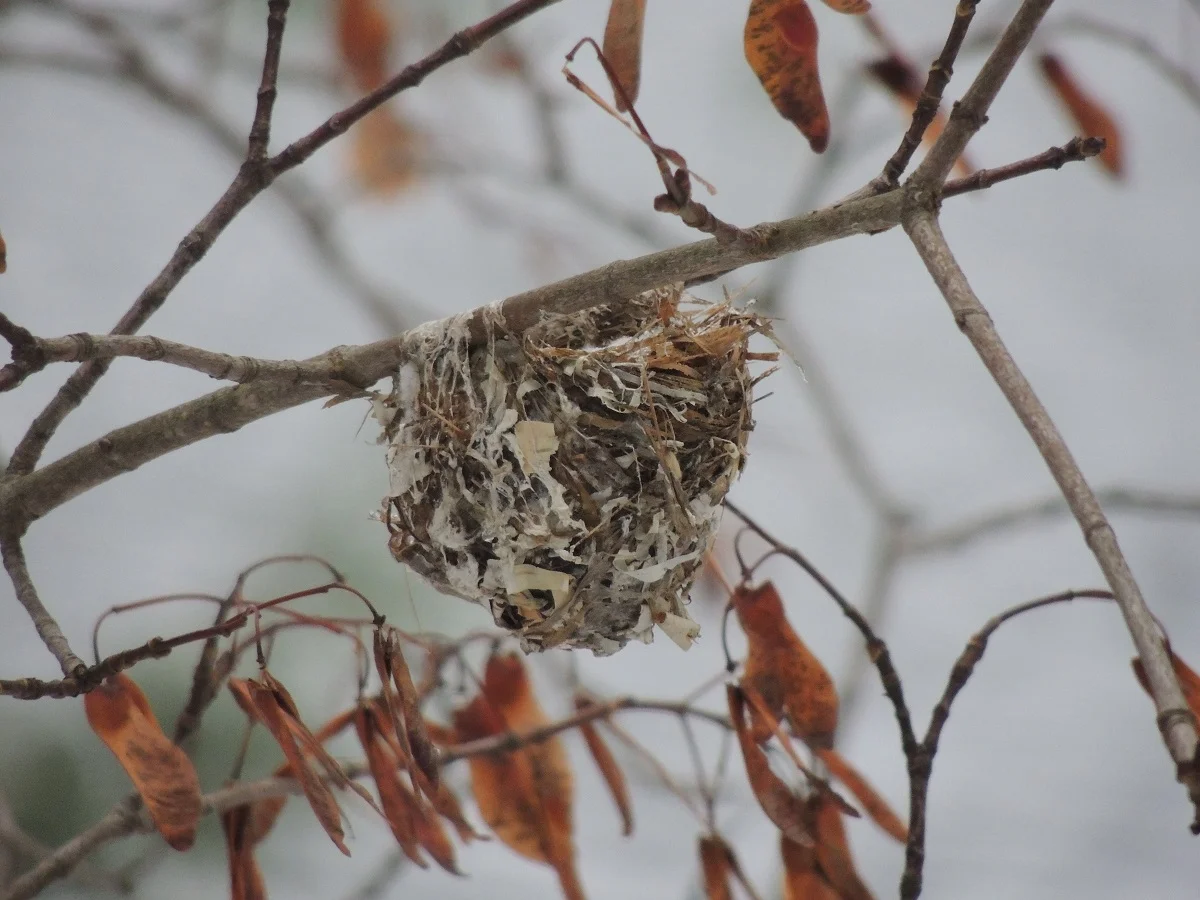November Nests
Doug Smith
A walk in the Beacon woods at this time of year is revealing. With the leaves off of the trees there are some surprising features that went unnoticed during the past summer. The nest of a vireo or warbler, suspended at the end of a branch, was likely hidden by leaves during the breeding season. And that large wasp's nest tucked against the trunk of a small sapling -- it wasn't visible with the summer foliage.
Early winter is the best time to search for these now abandoned homes, and consider them up close.
Using grasses and other pliable materials, such as thin pieces of birch bark, a female songbird makes hundreds of trips in a period of a few days to gather these materials and weave them into a secure cup for her four or more eggs. Mud, spiders' webs or even her own saliva are added as glue. She'll brood her eggs for approximately two weeks. Once hatched the fast growing nestlings -- fed every 15 to 30 minutes by both parents during the long summer days -- fledge in just 10 to 14 days, though are still attended by their parents for another week or two. Mom might start a second brood soon afterwards, going through the same cycle again before the end of the summer. By now the parents and their surviving young are long gone, having flown south in early fall.
The wasp nest, too, is now unoccupied, all of the tenants having died off with the first cold spell, except the fertilized queens, which overwinter away from the nest. This elaborate structure was crafted in late spring from plant fibres and other materials, such as scrapings from old wooden railings. Mixed with the wasp's saliva and thoroughly chewed, the resulting 'paper' is laid down in many protective layers. Inside the nest the colony cares for the eggs laid by the queen. But in late summer the queen lays eggs of a different kind, which develop into the future queens and their mates. Once these mature they fly away from the nest to mate, with the males dying soon afterwards. The now fertilized females seek shelter to overwinter, and emerge next spring to start the cycle over again.
An amazing amount of work and energy is spent on these homes, though they serve as such for just a short time before being abandoned with the coming of winter. Next spring sees the cycle repeated, as neither the wasps nor the birds will re-use the old nests. Those have served their purpose and will soon become part of the elements again under winter's harshness.
““For we know that if the earthly tent which is our house is torn down, we have a building from God, a house not made with hands, eternal in the heavens.” ”
God gives us homes here while we need them. They certainly last longer than a bird's or a wasp's nest, but our homes don't last forever, either. A wintry blast takes them away almost as easily as the wind and snow take away the bird and wasp nests. But God has provided something better for us -- an amazing home with Him forever, once our present home has served its purpose.


